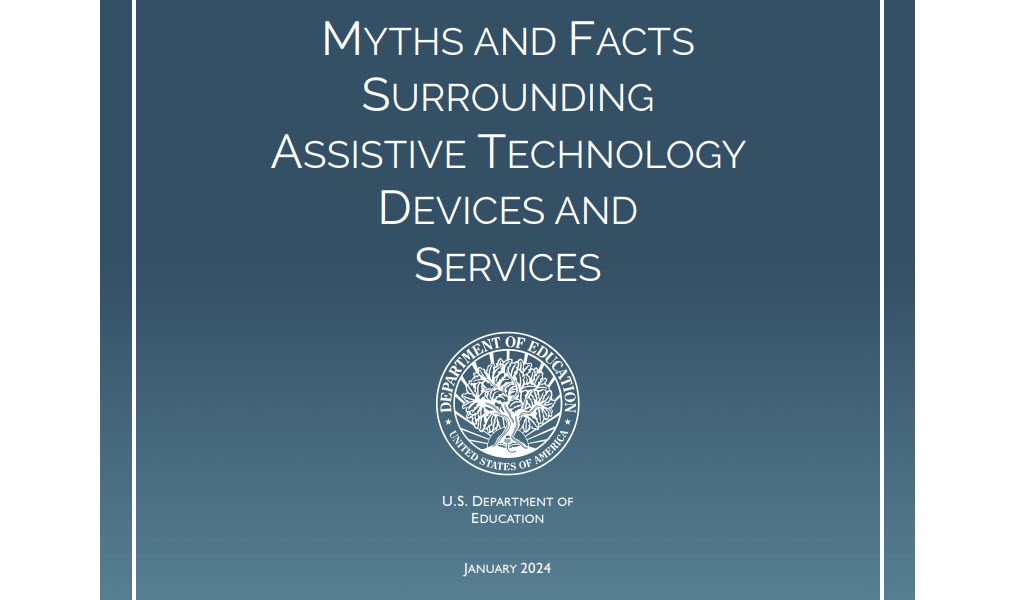A new guidance document from the U.S. Department of Education (USDOE) debunks myths about providing assistive technology (AT) services and devices to students and emphasizes the importance of reducing barriers to education.
“Myths and Facts Surrounding Assistive Technology Devices and Services,” released on January 22, 2024, and the accompanying “Dear Colleague” letter provide all learners with “meaningful access and participation in education.” provides long-needed guidance that addresses the critical role technology plays in ensuring the delivery of ”.
Divided into five categories, this document covers everything from the IEP team's responsibilities for considering AT devices and services during IEP development to the sources of funding for AT devices and services.
- Assistive technology requirements under Part B of IDEA
- Common myths and facts about assistive technology devices and services
- Common Myths and Facts About Deploying Assistive Technology Devices and Services
- Assistive technology requirements under Part C of IDEA
- Common myths and facts about assistive technology costs and funding sources
The information provided addresses the key needs of educators, parents, and students and is presented in an easy-to-understand Q&A format. However, instead of a question and answer session, myths and facts were presented, combined with supporting sources, and a discussion of the facts took place.
For example, the first myth presented is:
“Myth 1: Assistive technology (AT) should only be discussed in some Individualized Education Program (IEP) team meetings.”
Here are the facts that disprove Myth 1:
“Fact: Every time an IEP team develops, reviews, and revise a child’s IEP, the IEP team must consider whether the child needs AT devices and services.”
The discussion related to this fact is as follows.
“Additionally, if the IEP team determines that AT devices and services are necessary to ensure that the child receives a free appropriate public education (FAPE), the local education agency (LEA) may The IEP team has the discretion to determine the type of AT equipment and services necessary for the child to receive meaningful educational benefits, among other things. , the IEP must include a statement regarding special education and related services, and supplemental aids and services (which may include AT). Services enable the child to: (i) make appropriate progress toward achieving the annual goals of the child's IEP; and (ii) participate in and progress in general activities; educational curriculum; ( iii) participate in extracurricular and other non-academic activities; and (iv) receive education and participate with other children with and without disabilities.”
Sources that support this fact and related arguments include:
- 34 CFR § 300.105
- 34 CFR § 300.324(a)(2)(v) and (b)(2).
- 34 CFR §§ 300.320(a)(4)
Additionally, this document reminds us that AT devices and services can also be used with infants, toddlers, and younger children, and that early implementation of AT devices and services can lead to improved academic outcomes.


